Y'know, digital parties are far better than in-person ones. The clean up time is minuscule in comparison, and there was gonna be more to this bit but I was just reminded that minuscule is spelt like that and that's taken over my thought process now.
This week, we're taking a breather and doing some digital deep-diving!
Star of the Show
Our first port of call is of course to congratulate Wassculaire, whose Wishing Stars won the WCDC this week!
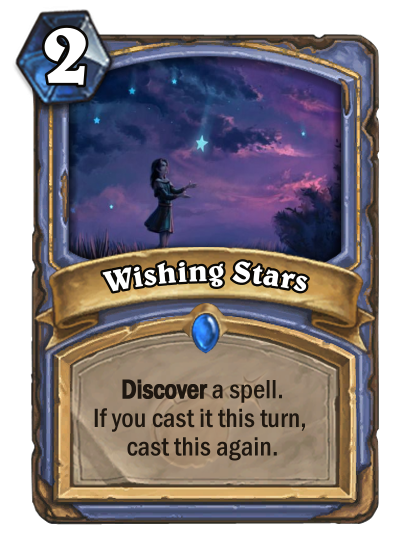
Look forward to their theme coming next week!
Christmas in June
That's not our only congratulations this week, however! KANSAS was also a winner this week, with their 'Ordinary' Present taking the top spot in our special Birthday competition!
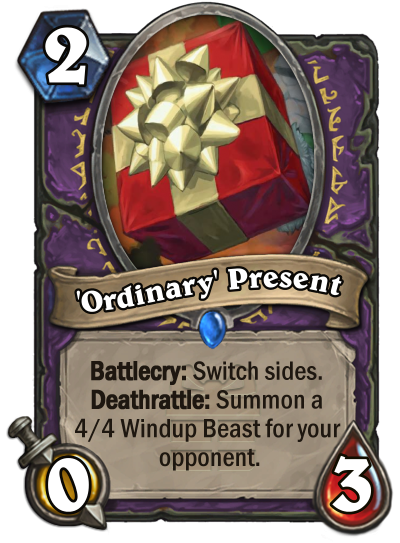
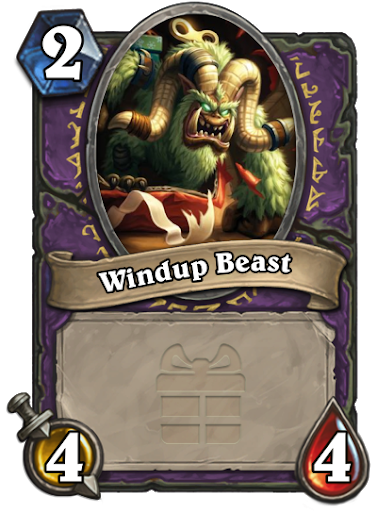
There were a lot of great entries, but they came out on top and won 15 packs for their trouble!
Pokémon, Digital Monsters, Robots in Disguise
Speaking of the Birthday competition, it got me thinking about the nature of Hearthstone as a digital card game. I've thought about it many times over the years, because it comes up a lot when designing Fan Cards, as there are so many things that are possible in a digital game that just aren't feasible in a non-digital space.
Of course, it can often be surprising how many things do get quite complex in non-digital games.
Take for instance my card for the Birthday competition, and the Pokemon TCG card it is inspired by.
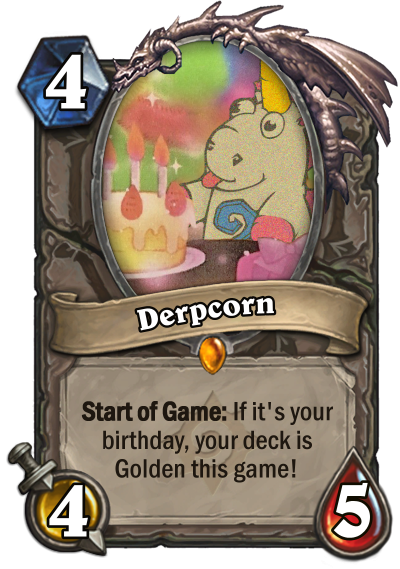

Yes, I spent far too long aging Derpcorn for that image.
This cute little promo card, _______'s Pikachu (more commonly know as the Happy Birthday Pikachu), has space for you to write your name in at the top, and your birthday at the bottom. In this way, you can have a card which uses your own birthday as a determinant for its effect! The card itself is quite bad, especially in today's insanely powercrept meta, but the idea behind it is awesome and finding a way to make that effect work somewhat easily in a non-digital space is so cool to me.
As you can see, I took the card in a more silly, digital-only way by having your whole deck turn Golden for including it, but the fact that the condition is something they managed to make workable is so fun to me. Really, I just wanted an excuse to Photoshop that art together anyway.
In many ways I'm reminded of MtG's Un-Sets, where stretching the bounds of what can be done in a physical game is the whole point.
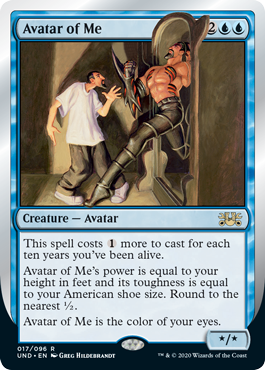

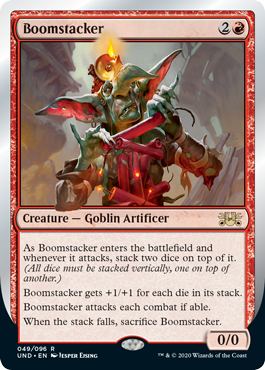
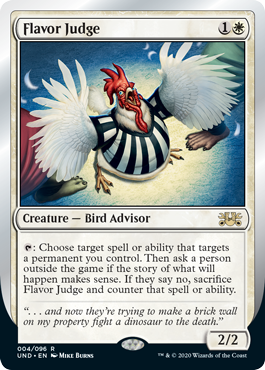
Two for the price of pun.
Here, for example, are some of my favourite cards from their most recent Un-Set, Unsanctioned.
Avatar of Me plays in the same space as the Birthday cards, taking attributes of the player that are at least somewhat verifiable (and I mean, it's silver border Magic, you're playing for fun anyway) and creating a wacky card out of it. I like that it's printed as a Blue card (the most common eye colour among the normal Magic colours) but can spiral into whatever.
Syr Cadian, too, is something that is fairly easily verifiable in paper play, but would be interestingly both easier and harder to control in digital. While it could simply take the time the sun will set and rise each day and plug that in, the idea that you could be playing someone in a different part of the world completely is fascinating in its implications. How would you standardize it? A fun conundrum.
Boomstacker and Flavor Judge are my all-stars though, because these are cards that simply cannot work in a digital environment, and only make sense in real-life play. Well, if you want to be pedantic, theoretically you could get Boomstacker to work if you wanted to include an accurate physics engine in your digital card game - and something like Tabletop Simulator plays in that space - but Flavor Judge relies on that interaction between players, those real-life arguments and persuasions that can't be codified into a digital space. So often the question of what unique ideas you can do with a digital game comes up, but rarely do I hear the opposite question posed, when the answers can be so unique.
A final example, from black-border Magic this time, of a mechanic that caused quite a stir when it was shown off.

Gotta get those squats in.
For a digital card game, this kind of effect is incredibly easy to throw in - in fact, Adapt is this idea taken to new extremes, with the 3 of the 10 options chosen at random for the player to choose from. Indeed, when playing with this card in MTGA the game simply lets you know the effect is going off and then bloop, there's a Hexproof counter, guess we're losing now.
In the physical game, however, this toes the line of acceptable complexity for many people, simply because of how unwieldy the mechanic is. This one card requires you to have a method of tracking the numerous counters on it - they helpfully included tokens in some packs for this purpose - and a method of randomly selecting one of these counters. My suggested method would be to assign each one in order onto a D10 and roll for it, re-rolling as needed.
That doesn't sound too awful; pen-and-paper can take the place of the tokens easily enough if you prefer less clutter, even. But many saw this as a dangerous push for mechanics that played well in digital and not so well in paper. The time-consuming nature of establishing which tokens it has and what it gains could be seen as off-putting in an already complex set.
The point of this ramble was just to show-off the ways in which digital and physical card games differ, and more than that to show how a complex idea in paper can be simple in digital, and vice versa. When designing fan cards, it can be tempting to push for radical, out-there designs which truly take advantage of the digital space, but sometimes it doesn't hurt to remember that even something as simple as Discover couldn't ever make its way into a physical game without massive mechanical overhauls. And sometimes, that out-there effect you came up with turns out to not even be that out-there anyway.

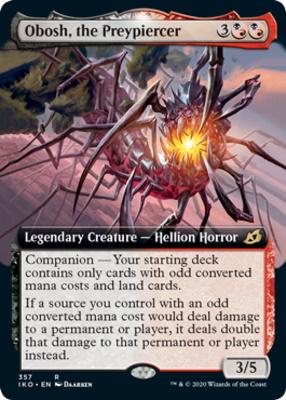
B-baku and Genn?!
Always Gonna Want You Back
And of course, we round off with the new WCDC for this week! We're all about our X this week, with no next in sight. Click the banner to find out more.
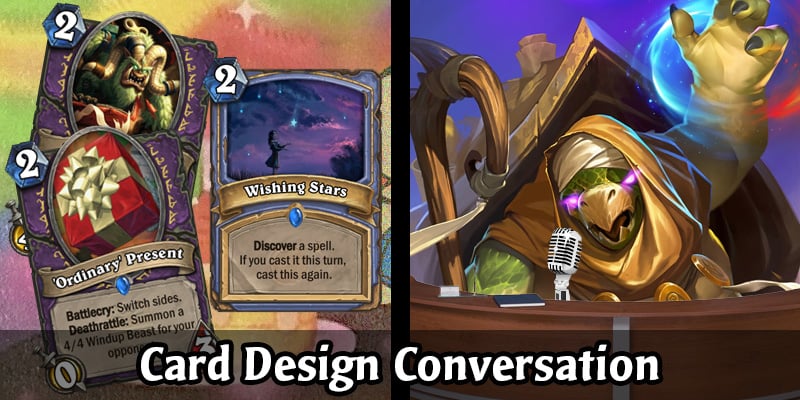

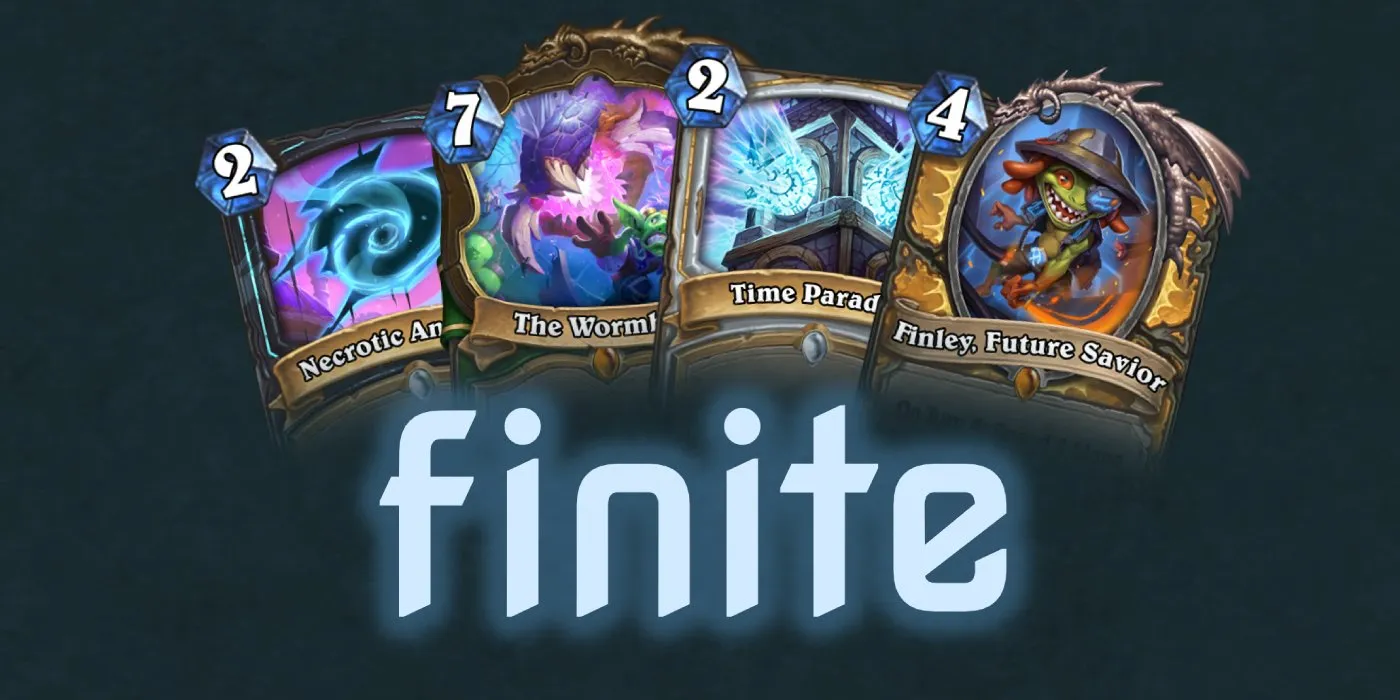
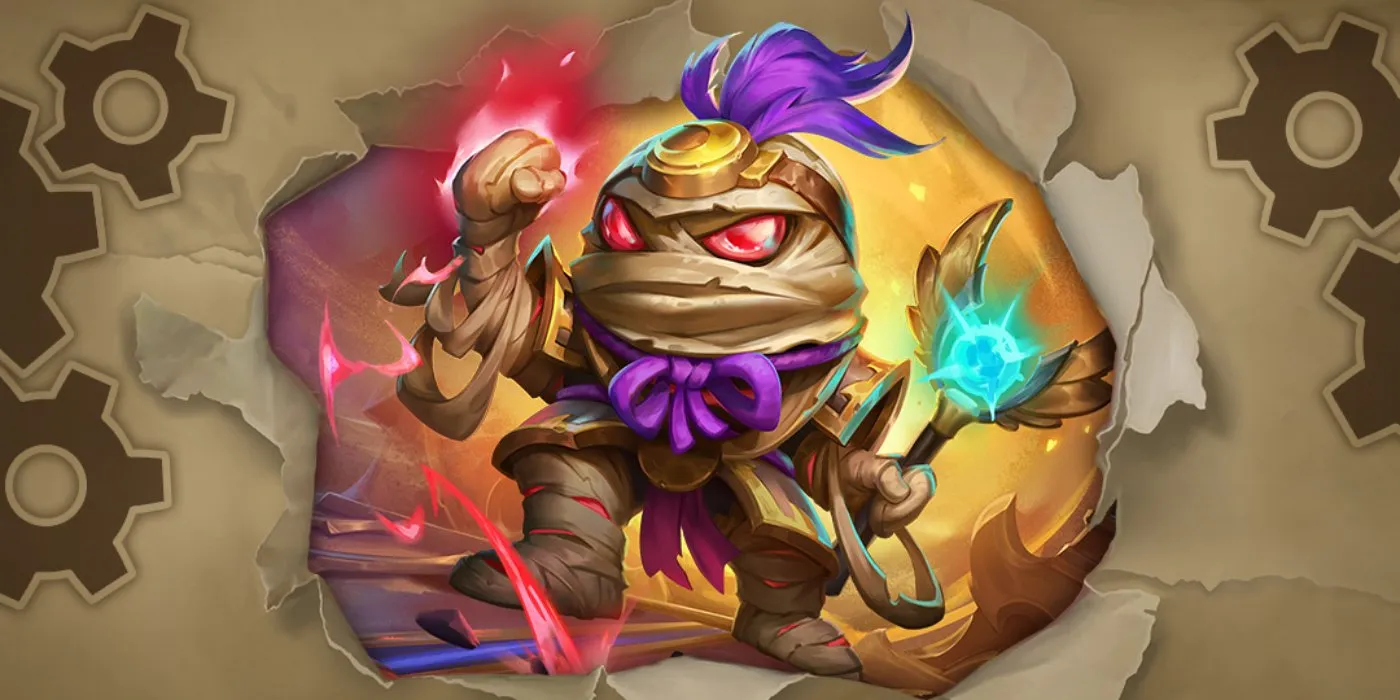
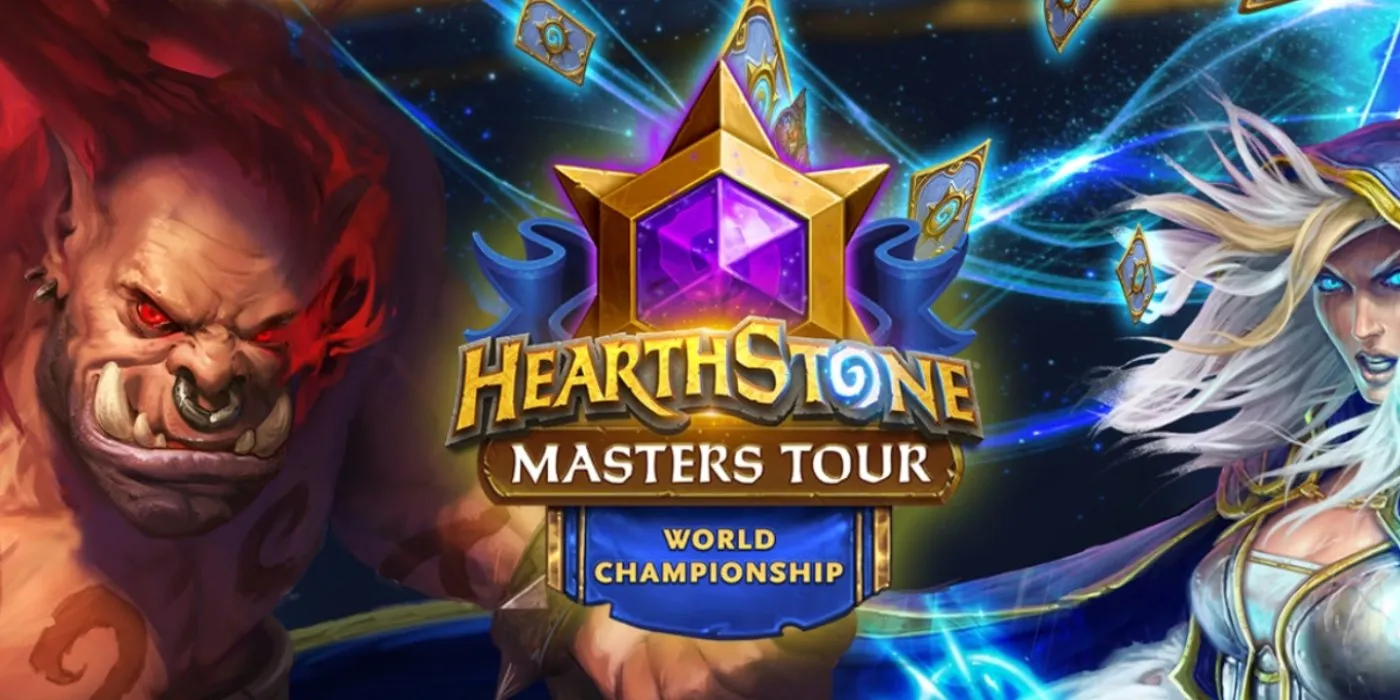
Comments
totally would play that wishing stars... it should be put into an adventure